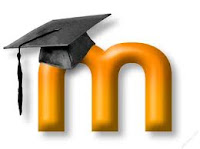Time has passed by and here I am writing my reflections about my own learning process after fourteen weeks of intensive and very very hard work. I never thought this subject was going to be so demanding in terms of time, syncronous virtual classes, designing artifacts, commenting on others´artifacts. OMG so much work to do. In week 5 I was about to collapse, and I must confess that I went through all and every possible and imaginable feelings due not only to the stress of the subject itself, due dates and hard work but also because of my responsibilities at home and work.
I went through different stages in the process, I sometimes felt totally desperate, with no idea of what to do. Oh My God, hands in my head how to do with all this information, widgets, gadgets, blogs, posts? But as we all know the calm comes after the storm. And here we are, about to finish, with tons of experiences, of every kind, with the satisfaction of having finished part of the process, with the eager of continuing practising for future challenges. Now, after only fourteen weeks we have learned how to design wikis, glogsters, blogs, podcasts, videos, voice discussions among other interesting things as Second Life.
We have overcome the tasks, our presentations were a great experience too. Everybody so professional presenting amazing and interesting projects to teachers of other countries.
Wow! Outstanding! And we did it too! Even if we were overloaded with so much information now I can see and feel the results of such a big effort.
I have learnt so much, now I can tell I am on the right track regarding ICT´s in the TEFL classroom. I can say now that I am walking towards becoming a digitally literate facilitator. No more old-fashioned devices for fostering listening, No! Podcasts are now the tool to be used, and so on and on.
There is a tremendous world in front of us willing to be catched and used at the upmost level. It´s our decision to do it or not. But what implications shall it have? Is it the difference of moving with the train and falling from it? What would our students think about? Do they really want to continue working as in the caves? Surely, rore reflections would be necessary for some of us but what I know now is that I want to catch up that train, but not the slow and noisy one, but the Shanghai Maglev´s, the fastest train in the world.
Before posting my piece of writing, I want to thank my family for their support. For not speaking when having our virtual sessions. For being so patient every weekend in this ending term. My classmates for exchanging information. My friends Maite, Ma Aurora, Ivan so concerned with all the process, so willing to help at anytime, so helping when things were not going so well. And last but not least, thank you Evelyn for sharing all the knowledge with us and for being so generous.
References:
www.googleimages.com

















